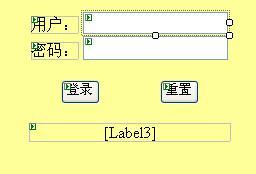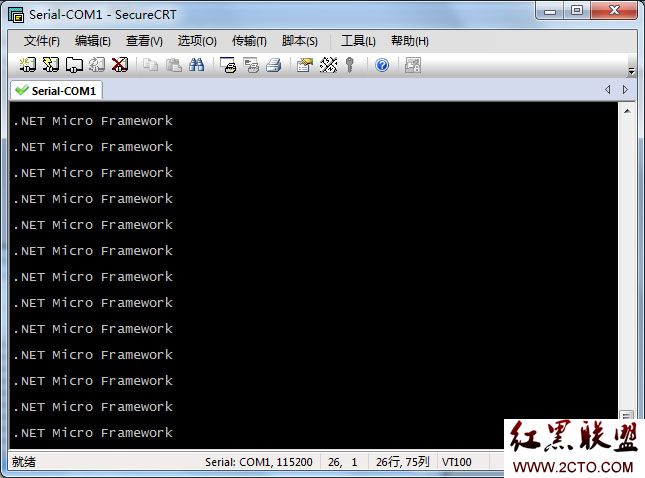当前位置:编程学习 > asp >>
答案:HTML Document Character Set
Contents
The Document Character Set
Character entities
Human languages define a large number of text characters and human beings have invented a wide variety of systems for representing these characters in a computer. Unless proper precautions are taken, differing character representations may not be understood by user agents in all parts of the world.
The Document Character Set
To promote interoperability, SGML requires that each application (including HTML), as part of its definition, define its document character set. A document character set is a set of abstract characters (such as the Cyrillic letter "I", the Chinese character meaning "water", etc.) and a corresponding set of integer references to those characters. SGML considers a document to be a sequence of references in the document character set.
The document character set for HTML is the Universal Character Set (UCS) of [ISO10646]. This set is character-by-character equivalent to Unicode 2.0 ([UNICODE]). Both of these standards are updated from time to time with new characters and the amendments should be consulted at the respective Web sites.
In the current specification, references to ISO/IEC-10646 or Unicode imply the same document character set. However, the current document also refers to the Unicode specification for other issues such as the bidirectional text algorithm.
Conforming HTML user agents may receive or output a document, or represent a document internally, using any character encoding. A character encoding represents some subset of the document character set. Character encodings such as ISO-8859-1 (commonly referred to as "Latin-1" since it encodes most Western European languages), ISO-8859-5 (which supports Cyrillic), SHIFT_JIS (a Japanese encoding), and euc-jp (another Japanese encoding) save bandwidth by representing only slices of the document character set.
Thus, character encodings allow authors to work with a convenient subset of the document character. Authors should not have to know anything about the underlying character encoding of the document or tool they are using --- writing Japanese in a UTF-8 editor is as easy as writing Japanese in a JIS or SHIFT_JIS editor.
Character encodings also mean that authors are not required to enter a document's text in the form of references the document character set. Requiring authors to work with such a large character encoding would be cumbersome and wasteful (although encodings such as UTF-8 that cover all of Unicode do exist).
To allow this convenience, conforming user agents must correctly map to [UNICODE] all characters in any character encodings ("charsets") they recognize (or behave as if they did). A list of recommended character encodings for various scripts and languages will be provided in a separate document.
How does a user agent know which character encoding has been used to encode a given document?
In many cases, before a Web server sends an HTML document over the Web, it tries to figure out the character encoding (by a variety of techniques such as examining the first few bytes of the file, checking its encoding against a database of known files and encodings, etc.). The server transmits the document and the name of the character encoding to the receiving user agent by way of the charset parameter of the HTTP "Content-Type" field. For example, the following HTTP header announces that the character encoding is "euc-jp".
Content-Type: text/html; charset=euc-jp
The value of the "charset" parameter must be the name of a "charset" as defined in [RFC2045].
Unfortunately, not all servers send information about the character encoding (even when the character encoding is different from the widely used ISO-8859-1 encoding). HTML therefore allows authors a way to tell user agents which character encoding has been used by specifying it explicitly in the document header with the META element. For example, to specify that the character encoding of the current document is "euc-jp", include the following META declaration:
<META http-equiv="Content-Type" Content="text/html; charset=euc-jp">
This mechanism has a notable limit: the user agent cannot interpret the META element to determine the character encoding if it doesn't already know the character encoding of the document. The META declaration must only be used when the character encoding is organized such that ASCII characters stand for themselves at least until the META element is parsed. In this case, conforming user agents must correctly interpret the META element.
To sum up, conforming user agents must observe the following priorities when determining a document's character encoding, (from highest priority to lowest):
Explicit user action to override erroneous behavior.
An HTTP "charset" parameter in a "Content-Type" field.
A META declaration with "http-equiv" set to "Content-Type" and a value set for "charset".
The "charset" attribute set for the A and LINK elements.
User agent heuristics and user settings. For example, user agents typically assume that in the absence of other indicators, the character encoding is ISO-8859-1. This assumption may lead to an unreadable presentation of certain documents.
In all cases, the value of the "charset" attribute or parameter must be the name of a "charset" as defined in [RFC2045].
If, for a specific application, it becomes necessary to refer to characters outside [ISO10646], characters should be assigned to a private zone to avoid conflicts with present or future versions of the standard. This is highly discouraged, however, for reasons of portability.
Note: Modern web servers can be configured with information about which document is using which character encoding. Webmasters should use these facilities but should take pains to configure the server properly.
Character entities
Your hardware and software configuration probably won't allow you to refer to all Unicode characters through 易做图 input mechanisms, so SGML offers character encoding-independent mechanisms for specifying any character from the document character set.
Numeric character references (either decimal or hexadecimal form).
Named character references.
Numeric character references specify the integer reference of a Unicode character. A numeric character reference with the syntax &#D; refers to Unicode decimal character number D. A numeric character reference with the syntax &#xH; refers to Unicode hexadecimal character number H. The hexadecimal representation is a new SGML convention and is particularly useful since character standards use hexadecimal representations.
Here are some examples:
Entity å refers to the letter "a" with a small circle above it (used, for example, in Norwegian).
Entity å refers to the same character with the hexadecimal representation.
Entity И refers to the Cyrillic capital letter "I".
Entity 水 refers to the Chinese character for water with the hexadecimal representation.
To give authors a more intuitive way to refer to characters in the document character set, HTML offers a set of named character entities. Named character references replace integer references with symbolic names. The named entity å refers to the same Unicode character as å. There is no named entity for the Cyrillic capital letter "I". The full list of named character entities is included in this specification.
Four named character entities deserve special mention since they are frequently used to "escape" special characte
上一个:asp的cookie本身不设置的话默认的是application的path=/,所以不设关系不大,expires要设。给你netscape...
下一个:Dreamweaver 4 & UltraDev 4两个BUG(字体设置不能保存和行号显示错位)的解决方法
- 更多asp疑问解答:
- asp正则过滤重复字符串的代码
- 用asp过滤全部html但保留br类似的符号
- 会asp,但感觉asp要过点,想学php。但我一般做的都是小公司的站,用access数
- PHP的空间可以用ASP的源代码吗?
- 以前做asp程序,现在应该怎样发展?是学.net还是php
- 以前做asp程序,现在应该怎样发展?是学.net还是php
- 想做一个市级的人才网acess,sql数据库,语言asp,jsp,php分别用哪种好
- jsp,asp,php 区别
- 我想找一个有比较多漏洞的网站的源码,比如可以asp,php注入等都可以。供学习研究用。请提供下载地址。。
- 现在候找人做个网站,用ASP,还是PHP语言去做好
- asp,php ,jsp,.net 对于做网站前台的重要吗?
- asp和php的区别是什么?
- 我是新手SEO菜鸟 请问wp dw php asp cms myspl dede 这些软件应该如何区分呀?
- 网页制作相关的三种语言:ASP JSP PHP那个好点,简单点?
- 网页制作相关的三种语言:ASP JSP PHP那个好点,简单点?





